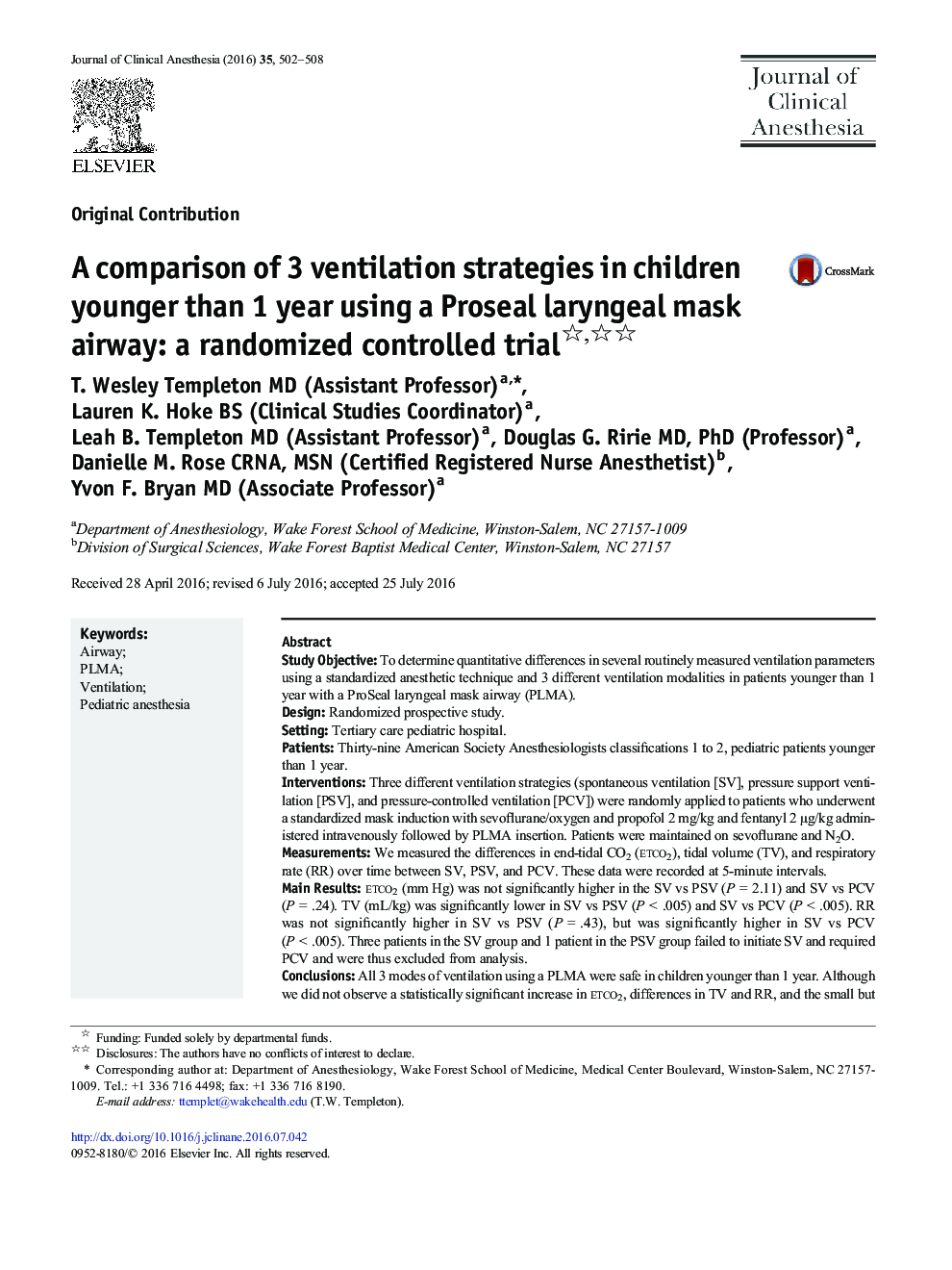| کد مقاله | کد نشریه | سال انتشار | مقاله انگلیسی | نسخه تمام متن |
|---|---|---|---|---|
| 5884341 | 1567655 | 2016 | 7 صفحه PDF | دانلود رایگان |
- Three ventilation strategies using the ProSeal LMA were tested in patients younger than 1 year.
- The ProSeal LMA is safe for use in patients younger than 1 year.
- PS or PC ventilation techniques are appropriate when using the PLMA in patients younger than 1 year.
Study ObjectiveTo determine quantitative differences in several routinely measured ventilation parameters using a standardized anesthetic technique and 3 different ventilation modalities in patients younger than 1 year with a ProSeal laryngeal mask airway (PLMA).DesignRandomized prospective study.SettingTertiary care pediatric hospital.PatientsThirty-nine American Society Anesthesiologists classifications 1 to 2, pediatric patients younger than 1 year.InterventionsThree different ventilation strategies (spontaneous ventilation [SV], pressure support ventilation [PSV], and pressure-controlled ventilation [PCV]) were randomly applied to patients who underwent a standardized mask induction with sevoflurane/oxygen and propofol 2 mg/kg and fentanyl 2 μg/kg administered intravenously followed by PLMA insertion. Patients were maintained on sevoflurane and N2O.MeasurementsWe measured the differences in end-tidal CO2 (etco2), tidal volume (TV), and respiratory rate (RR) over time between SV, PSV, and PCV. These data were recorded at 5-minute intervals.Main Resultsetco2 (mm Hg) was not significantly higher in the SV vs PSV (P = 2.11) and SV vs PCV (P = .24). TV (mL/kg) was significantly lower in SV vs PSV (P < .005) and SV vs PCV (P < .005). RR was not significantly higher in SV vs PSV (P = .43), but was significantly higher in SV vs PCV (P < .005). Three patients in the SV group and 1 patient in the PSV group failed to initiate SV and required PCV and were thus excluded from analysis.ConclusionsAll 3 modes of ventilation using a PLMA were safe in children younger than 1 year. Although we did not observe a statistically significant increase in etco2, differences in TV and RR, and the small but significant incidence of apnea may make PSV or PCV more optimal ventilation strategies in children younger than 1 year when using a PLMA.
Journal: Journal of Clinical Anesthesia - Volume 35, December 2016, Pages 502-508
